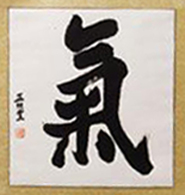“Way of the Flowering Knights”

Hwa Rang Do is an 1800 year old Korean Martial and Healing Arts system. Its theory is based on the Um-Yang principle which states that all things in nature possess equal opposites and the state of balance of these opposing forces creates harmony in one’s life.
During the ancient times in the kingdom of Shilla, an elite group of young males were selected from noble families and were taught literature, dance, poetry, music, horsemanship, philosophy, science, and the art of war. They were known as the “Hwa Rang” the Flowering Knights, and due to their physical and mental strengths, these Hwa Rang warriors lead their kingdom in the unification of the Korean peninsula for the first time.
This system has been passed down to modern times, and in 1960 Dr. Joo Bang Lee brought this system back to the public when he began teaching in Seoul, Korea. Since then, Hwa Rang Do has spread throughout the world, while keeping a firm hold on its tradition.
Martial Skills
 Hwa Rang Do is one of the most comprehensive martial arts systems to be found in the world today. It is a balance of both soft/circular principles and hard/linear principles of movement which are divided into four divisions of study.
Hwa Rang Do is one of the most comprehensive martial arts systems to be found in the world today. It is a balance of both soft/circular principles and hard/linear principles of movement which are divided into four divisions of study.
Nae Gong – Internal Power
Is the area of study which involves developing one’s internal energy, or Ki power, through meditation and breathing exercises. Through both passive (um) and active (yang) methods an individual can enhance his or her physical and mental abilities, as well as one’s healing capacity.
Wae Gong – External Power
Is the development of the physical combat skills of the system. This takes the form of over 4,000 offensive and defensive techniques, 365 kicking combinations in both hard/linear and soft/circular movements. The achievement of complete physical control. These physical skills are focused on the Three Stages of Fighting:
1. Standing with Distance: The first stage of fighting occurs when two or more opponents are standing within arm/leg range. This is where we apply various kicking and punching combinations.
2. In-close and standing: Once you break the perimeter of your opponent, you are now inside. In-fighting incorporates the use of joint manipulation, pressure points, takedowns, and throws.
3. On the ground, grappling: Once a takedown has been applied, you are now on the ground. Ground fighting utilizes the use of choking, pressure points, and joint manipulation to make your opponent surrender.
Shin Gong – Mental Power
This category entails the development of mental concentration and alertness through a disciplined regiment of meditation, geared to enhancing greater focus. Also included is the study of the philosophy of the martial way in order to apply its principles to everyday life.
Moo Gi Gong – Weapon Power
The development and mastery of external objects. There are over 108 different weapons found within Hwa Rang Do, and by learning these various weapon systems, the practitioner can most effectively utilize any object as a weapon as the situation demands.
See the Founder of Hwa Rang Do Demonstrating Techniques
Rare 8mm Footage from the 1960’s!
Healing Skills
 Another important part of Hwa Rang Do is its study of healing skills. All advanced practitioners of Hwa Rang Do must learn these healing skills in conjunction with their martial skill practice. If one can cause injury (or worse) then one must also have the ability to heal. The healing skills found in Hwa Rang Do are divided into 6 categories:
Another important part of Hwa Rang Do is its study of healing skills. All advanced practitioners of Hwa Rang Do must learn these healing skills in conjunction with their martial skill practice. If one can cause injury (or worse) then one must also have the ability to heal. The healing skills found in Hwa Rang Do are divided into 6 categories:
· Ji Ap Sool – Acupressure
· Chim Gu Sool – Acupuncture and Maxabustion
· Yak Bang Bop – Herbal Medicine
· Jup Gol Sool – Bone Setting
· Hwal Bop – Special Aids
· Ki Ryuk Sool – Ki Power Healing
